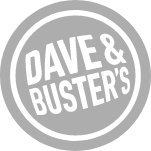The Agency of the future, for the brands of tomorrow.
Fueled by a passion for marketing in an ever-changing world, we're taking the best of public relations, advertising and creative agencies without the walls in between. Holistic marketing, measured by creativity not buzzwords, backed by data not hype.
Your PR & Digital Marketing Agency
We're Konnect, a full-service PR and Digital Marketing agency with offices in Los Angeles, Denver, Oklahoma City, Chicago, and New York City. We are constantly innovating in an evolving digital landscape. But it’s our people that set us apart—a dynamic, nimble team of strategists, creators and amplifiers who thrive on solving big challenges.
We Grow Fast-moving Brands





“When we decided to pursue PR more than five years ago, we had only a few locations and had limited consumer awareness. The minute Konnect PR came on board, we were immediately propelled into the national spotlight and have continued to stay there as a result of our long term relationship with Konnect. Much like Konnect, we have continued to grow at a rapid pace, with more than 75 Sky Zone locations nationwide. Year after year, the team surpasses my expectations for what’s possible, securing placements with some of the highest regarded business and consumer outlets. Their relentless approach and passion for our success has only strengthened our relationship. It also helps that they are an incredibly awesome group of people.”
Jeff Platt, Chief Executive Officer | View Case Study
View Case StudiesLet’s Build Something Big
Our next big thing may be your next
Brands We’ve Worked With







Digital Change-Makers
We create meaningful customer journeys via media, content, technology and amplification. From overall strategy to creative execution our team helps to cultivate new ideas to connect the dots with your customers.
Learn MoreJoin the Krew
We're a passionate group of like-minded people—some who've grown this thing from the ground up. See what positions we are actively hiring for.
View CareersHow We Work
Flexibility
We’re always evaluating and evolving to create solutions that are scaleable and iterative.
Passion
We’re a group of individuals with a fiery desire to do amazing work and to position and drive demand for your brand.
Positivity
We know outlooks drive outcomes, that’s why we always start from a place of yes.
Integrity
We hold ourselves, our clients and our work to the highest standards in execution and decorum.
Lessons Learned From Planning These Buzz-Worthy Events
Planning a successful event requires careful consideration and...
Read Blog
Insider News & Trends Delivered Fresh To Your Inbox
No junk. Just insider tips and tricks to keep you on top of your game.





